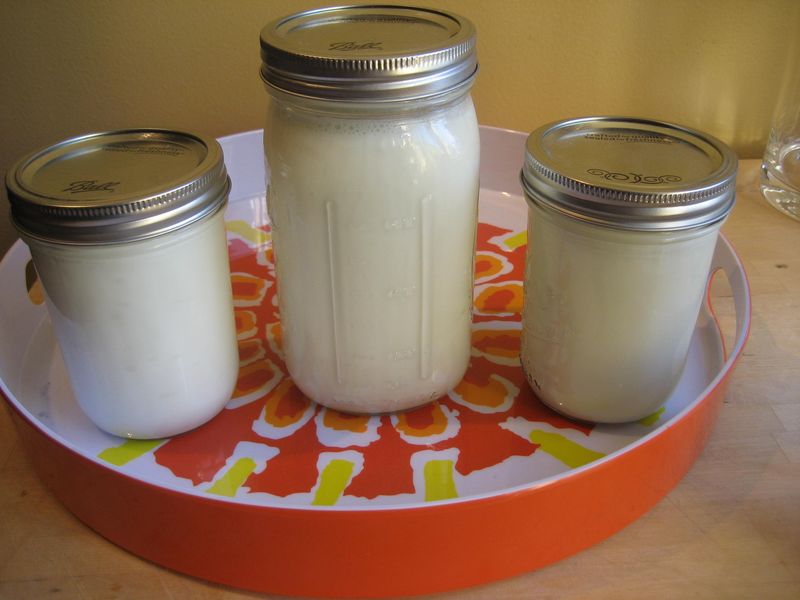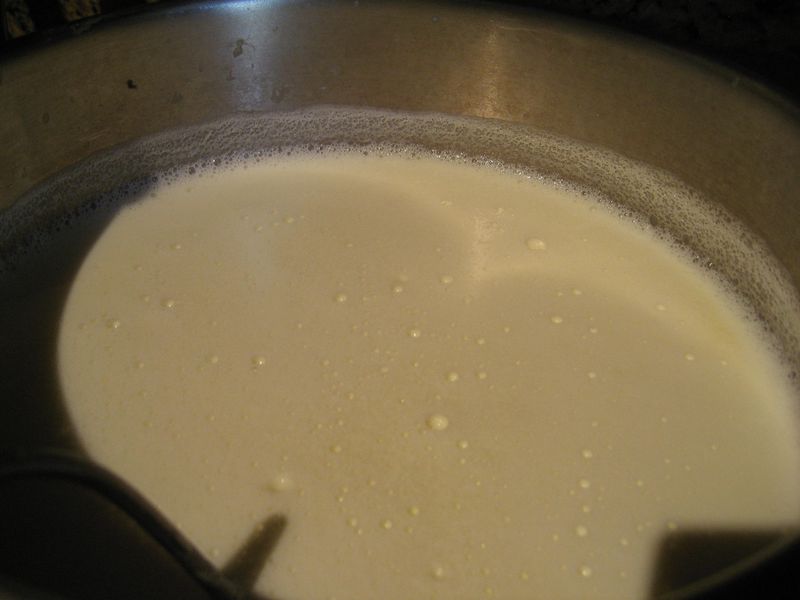By Humaira
Yogurt is one of my obsessions. I eat it with everything. I love the tangy cool taste, which enhances every dish. Once I horrified my husband by dumping two large spoonfuls of plain yogurt into my bowl of ramen noodles.
Afghans add yogurt as a topping to many dishes such as kadoo, aushak, and aush. However, my family goes over the top, we add yogurt to everything. Recently I learned I am allergic to yogurt. This was a sad day for me. Apparently I am allergic to the protein in milk not be confused with lactose intolerance. This type of allergy can cause inflammation, body aches, mucus build-up and cold symptoms.
As part of my yogurt grieving, I went on a rampage of furious yogurt making. Since I couldn’t eat any of it, the yogurt was delivered throughout the city to my taste testers at children’s basketball games, carpool lines or by husband’s delivery service.
For years I have watched Jeja (my mom) make tangy creamy yogurt but I never mustered up the courage to make it myself. When I finally dove in, I found yogurt making very relaxing and rewarding. To transform a liquid into a semi-solid made me feel like a chemist or, better yet, a magician.
The right yogurt starter is the key to success. Unbelievably yogurt starter is just a few spoonfuls of yogurt. The yogurt kick starts the thickening of the milk proteins, adds tartness and acts as a preservative. Choose your favorite yogurt as the yogurt starter; your homemade yogurt will taste just like it. I use Saint Benoit Yogurt which is creamy, tart and to die for.
Heating the milk to the right temperature is important. The milk must first reach 185° and then it must cool to 110° before you add the yogurt starter. I used a digital thermometer to help track the temperature. I hung the thermometer on the side of the pot and kept an eye on it until it reached the right temperatures. In the recipe I provide some pointers to help you gauge the right temperature if you don’t have a thermometer.
This recipe calls for whole milk, which makes the yogurt very creamy but you may use 2% or 1% milk, which met my tester’s approval too.
IMG_3702
Homemade Creamy and Tangy Yogurt
½ gallon whole organic milk
3 tablespoons good quality whole milk yogurt with live and active cultures
heavy bottom deep pan
two 2 pint size jars with tight fitting lids, disinfected and dry
Instand read thermometer (optional)
I think making yogurt overnight is the best way to do it. There's nothing like waking up to a fresh batch to have with your breakfast. Letting the milk rest in the oven (turned off, of course) is the ideal spot according to Jeja, who feels the cozy temperature of the oven is just right for turning milk into yogurt. Don't forget to set aside 3 tablespoons of your finished yogurt to use as a starter for your next batch before you gobble it all down.
Pour the milk into a deep, heavy bottom saucepan and set over medium heat. Cook stirring occasionally, until the milk reaches 185°. You can test this using an instant read thermometer or gauge it by cooking the milk just until it is on the verge of boiling. Look for lots of tiny bubbles on the surface of the milk. This will take about 15 minutes depending on your pan and stove. Remove the milk from the heat and let is cool to 110°. This will take about an hour.
While the milk cools down, put the starter yogurt into a medium bowl and stir with a fork until creamy. Once the milk has cooled to 110°, pour into the bowl and stir for 2 minutes to make sure the yogurt and milk are mixed well.
Pour the milk into the jars and close the lids tightly. Place the jars on baking tray right next to each other so they can keep each other warm, cover with several dishcloths to make them cozy. Place them in a warm place, such as near the stove, for 9-12 hours to rest.
Serving size: Half a gallon of milk make ½ gallon of yogurt
IMG_3693
My thermometer was really handy with reaching the right temprature
IMG_3703
If you don't have a thermometer look for the bubblesl which is a great indicator of reaching the right temprature.
Except where otherwise noted, all content on this blog is licensed under the Creative Commons Attribution-NonCommercial-NoDerivs 3.0 Unported license.






